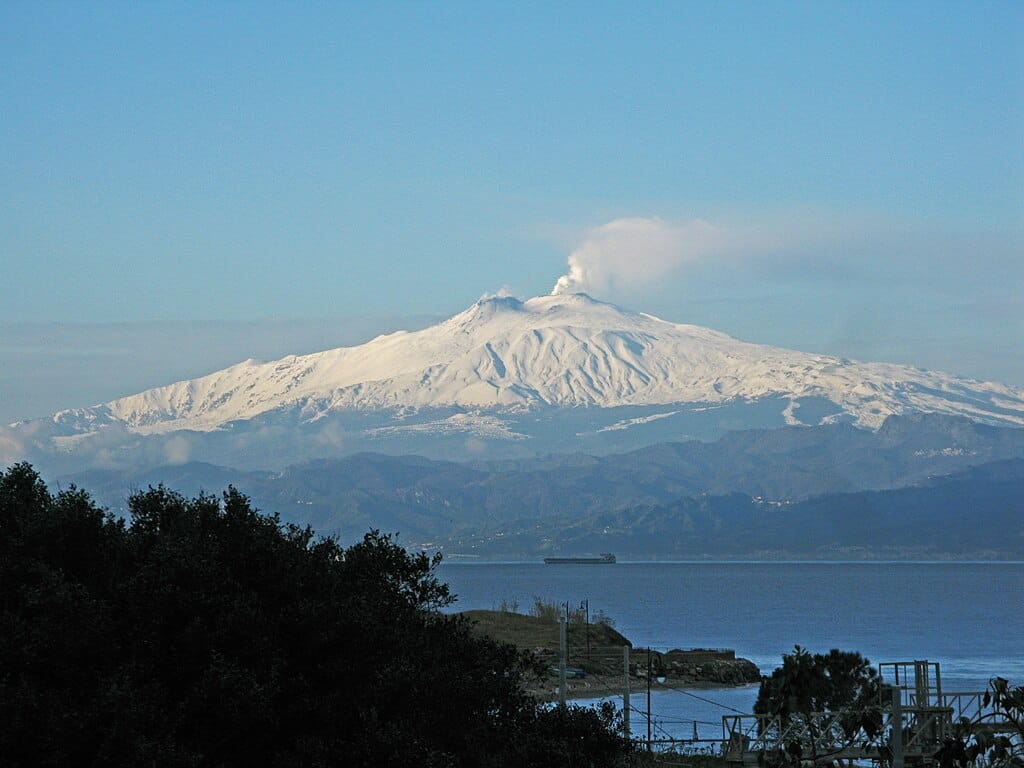
Mount Etna Volcano Erupts in Sicily, Italy
Mount Etna has experienced its largest eruption in four years, causing tourists to flee on Monday. Italian authorities have assured that tourists and residents are not in danger. This is the volcano’s 13th eruption this year, with previous eruptions attracting large crowds of tourists. The latest eruption occurred on Monday at around 3:50am local time, following volcanic tremors that began at midnight.

On June 2, 2025, Mount Etna volcano in Sicily, Italy experienced a violent eruption, sending toxic ash and smoke into the sky. The eruption began pre-dawn and reached its peak with “intense and almost continuous” strombolian explosions, before stopping 10 hours later. The pyroclastic flow affected the west southwest slopes of the volcano, and ashfall was reported in nearby areas. Fortunately, no major damage or casualties were reported, and the eruption did not cross the edge of the Valley of the Leo.
Mount Etna Overview
Mount Etna is the highest Mediterranean island mountain and the world’s most active stratovolcano. It has a 500,000-year eruptive history, with at least 2,700 years documented, making it a significant site for volcanology and Earth science research. The volcano supports diverse ecosystems and offers a unique natural laboratory for studying ecological and biological processes.
From the Independant.co.uk:
Air traffic disruption is principal concern, says expert
The main immediate concern following Mount Etna’s major eruption on Monday is air traffic disruption, an expert has said.
“The immediate concern is air traffic disruption. Commercial aircraft typically fly at similar altitudes as where the volcanic material is reaching, so persistent activity could force flight rerouting in the region,” said Dr Stuart Black, head of the School of Archaeology, Geography and Environmental Science at the University of Reading
“However, most volcanic episodes like this are fairly short-lived,” he added.
Dr Black added that the activity is unlikely to cause the “large-scale climate perturbations we’ve seen from other major volcanic events”.
Pyroclastic Flows: A Hazardous Natural Phenomenon
Pyroclastic flows are high-density mixtures of hot lava, ash, and volcanic gas that move at high speeds down volcanic slopes. They consist of two parts: a basal flow of coarse fragments and a turbulent ash cloud. These flows can form in different ways, including the collapse of an eruption column, boiling over from an eruptive vent, or the collapse of lava domes or flows.
Characteristics and Effects
- Travel at speeds of over 80 km/h (50 mph)
- Temperatures range from 200°C to 700°C (390-1300°F)
- Can ignite fires and melt snow and ice
- Can destroy nearly everything in their path, including buildings, forests, and farmland
- Can lead to secondary hazards such as flooding and lahars
Formation and Behavior
- Follow valleys or other low-lying areas
- Can deposit layers of loose rock fragments up to 200 m (700 ft) deep
- Can erode, melt, and mix with snow and ice, sending a sudden torrent downstream
- Can dam or block streams, creating lakes that eventually overtop and erode the blockage.
From the Independant.co.uk:
Air traffic disruption is principal concern, says expert
The main immediate concern following Mount Etna’s major eruption on Monday is air traffic disruption, an expert has said.
“The immediate concern is air traffic disruption. Commercial aircraft typically fly at similar altitudes as where the volcanic material is reaching, so persistent activity could force flight rerouting in the region,” said Dr Stuart Black, head of the School of Archaeology, Geography and Environmental Science at the University of Reading
“However, most volcanic episodes like this are fairly short-lived,” he added.
Dr Black added that the activity is unlikely to cause the “large-scale climate perturbations we’ve seen from other major volcanic events”.
https://www.foxweather.com/extreme-weather/italy-mt-etna-eruption-june-2025
https://commons.wikimedia.org/wiki/File:Mt_Etna_and_Catania1.jpg
https://whc.unesco.org/en/list/1427
https://www.usgs.gov/faqs/how-dangerous-are-pyroclastic-flows
Image of Mount Etna Attribution: Jacopo Werther, CC BY-SA 4.0 https://creativecommons.org/licenses/by-sa/4.0, via Wikimedia Commons
Discover more from EAGLE HORIZON REPORT
Subscribe to get the latest posts sent to your email.

